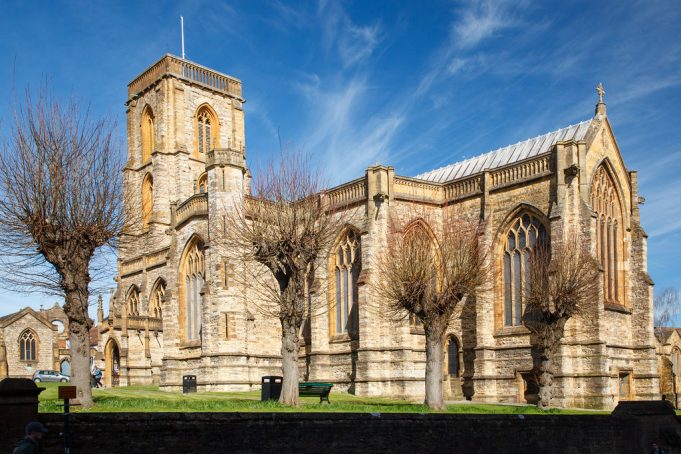From towering castles perched on rocky cliffs to sprawling fortresses nestled in lush valleys, the world is dotted with awe-inspiring citadels that have stood the test of time. These formidable structures have played a pivotal role in shaping the course of history, serving as bastions of power, symbols of prestige, and fortifications against invading armies. Whether you’re a history buff, an architecture enthusiast, or simply a curious traveler, exploring the world’s fortresses and citadels is an unforgettable experience that offers a glimpse into the past and a window into the future. Join us as we embark on a journey to uncover some of the world’s most fascinating and impressive fortifications, and discover the stories behind these wonders of human ingenuity.
1. Discovering the Secrets of the World’s Most Impenetrable Fortresses and Citadels
Exploring the world’s most impenetrable fortresses and citadels is an exciting adventure that takes you back in time to the days of knights and castles. These fortresses were built to withstand attacks from enemies and protect the people inside. They were designed with intricate defense systems that made them almost impossible to penetrate.
From the Great Wall of China to the Alhambra in Spain, these fortresses have stood the test of time and continue to amaze visitors with their architectural brilliance. Some of the most impressive fortresses include the Masada in Israel, the Tower of London in England, and the Machu Picchu in Peru. Each of these fortresses has its unique features that make them stand out from the rest.
- Masada: This fortress is located on a mountain in Israel and was built by King Herod. It has a complex water system that collects rainwater and stores it in cisterns.
- Tower of London: This fortress was built in the 11th century and has served as a royal palace, a prison, and a treasury. It is home to the Crown Jewels of England.
- Machu Picchu: This fortress is located in the Andes Mountains in Peru and was built by the Incas. It is known for its impressive stonework and intricate terraces.
Exploring these fortresses is an excellent way to learn about history and appreciate the architectural marvels of the past. It is a chance to step back in time and experience life in a fortress. These fortresses are a testament to the ingenuity and creativity of the people who built them.
2. Journey Through Time: Exploring the History and Architecture of Fortresses and Citadels
Fortresses and citadels are some of the most iconic structures in the world, with a rich history and fascinating architecture. These structures were built to protect cities and kingdoms from invaders, and they have stood the test of time as a testament to the ingenuity and skill of their builders.
Exploring the history and architecture of these fortresses and citadels is a journey through time, taking you back to the days of knights and kings, battles and sieges. From the towering walls of the Great Wall of China to the intricate fortifications of the Alhambra in Spain, each fortress and citadel has its own unique story to tell.
- Discover the secrets of the ancient fortress of Masada in Israel, where a small group of Jewish rebels held out against the might of the Roman Empire.
- Explore the stunning architecture of the Red Fort in Delhi, India, a masterpiece of Mughal design and engineering.
- Learn about the strategic importance of the Citadel of Aleppo in Syria, which has been the site of countless battles throughout history.
Whether you’re a history buff, an architecture enthusiast, or simply looking for an adventure, a journey through the fortresses and citadels of the world is an experience like no other. So grab your camera, pack your bags, and get ready to explore the past and present of these incredible structures.
3. From Machu Picchu to the Great Wall: A Tour of the World’s Most Iconic Fortresses and Citadels
When it comes to fortresses and citadels, few places in the world can rival the grandeur and historical significance of Machu Picchu and the Great Wall of China. These two iconic structures have stood the test of time and continue to captivate visitors from all over the globe.
Machu Picchu, located in the Andes Mountains of Peru, is a 15th-century Incan citadel that was abandoned during the Spanish conquest. Today, it is one of the most visited tourist attractions in South America, attracting millions of visitors every year. The site is renowned for its stunning architecture, intricate stonework, and breathtaking views of the surrounding mountains. Visitors can explore the various temples, terraces, and plazas that make up the citadel, and learn about the fascinating history and culture of the Inca civilization.
On the other side of the world, the Great Wall of China is a series of fortifications that stretches over 13,000 miles across northern China. Originally built to protect against invading forces, the wall is now a UNESCO World Heritage Site and one of the most recognizable landmarks in the world. Visitors can hike along the wall, taking in the stunning views of the surrounding countryside and marveling at the sheer scale of the structure. Along the way, they can explore the various watchtowers, fortresses, and barracks that were used to defend against enemy attacks.
Whether you’re a history buff, an architecture enthusiast, or simply looking for an unforgettable travel experience, a tour of Machu Picchu and the Great Wall of China is sure to leave you in awe. These two iconic fortresses and citadels are not only testaments to the ingenuity and perseverance of human civilization, but also reminders of the rich cultural heritage that we all share. As we conclude our journey through the world’s most magnificent fortresses and citadels, we are left in awe of the incredible feats of engineering and architecture that have stood the test of time. From the towering walls of the Great Wall of China to the intricate details of the Alhambra in Spain, these structures have not only served as symbols of power and protection but also as testaments to the ingenuity and creativity of humanity. As we continue to explore the world, let us not forget to appreciate the wonders that have been left behind by those who came before us. These fortresses and citadels are not just relics of the past but also a reminder of the resilience and determination of the human spirit.






























